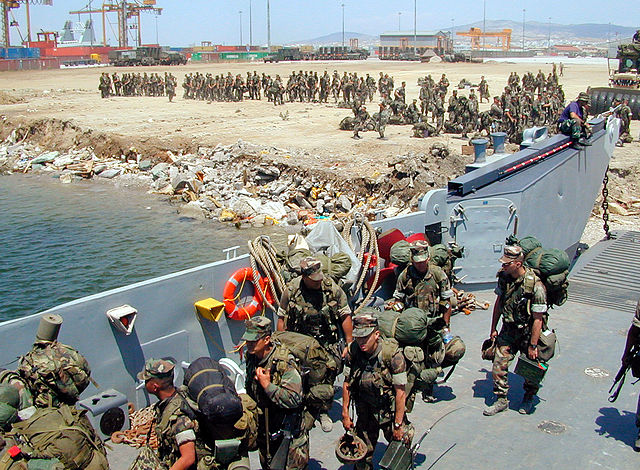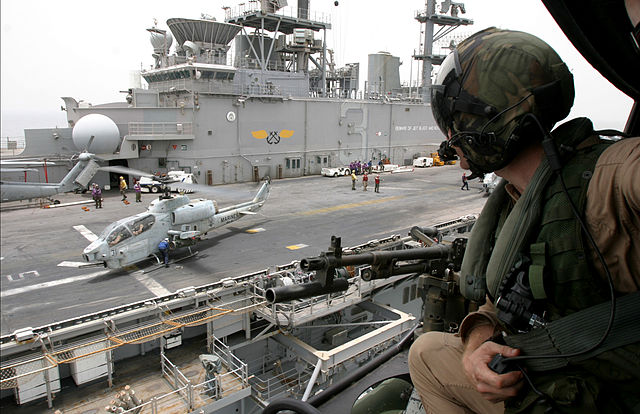31st Marine Expeditionary Unit
The 31st Marine Expeditionary Unit is one of seven Marine Expeditionary Units in existence in the United States Marine Corps. The Marine Expeditionary Unit is a Marine Air Ground Task Force with a strength of about 2,200 Marines and sailors. The 31st MEU consists of a company-sized command element, a battalion landing team (BLT),, a medium tiltrotor squadron (reinforced),, and a combat logistics battalion. The 31st MEU is based at Camp Hansen, Marine Corps Base Camp Smedley D. Butler, Okinawa, Japan. The 31st MEU is the only permanently forward-deployed MEU, and provides a flexible and lethal force ready to perform a wide range of military, humanitarian, and diplomatic operations as the premier crisis response force in the Indo-Pacific region.
31st MEU Crisis Response Force Insignia
Marines are training on USS Essex (LHD-2)
Marines and sailors with the Maritime Raid Force, 31st Marine Expeditionary Unit, approach and engage paper targets during a live fire exercise on the flight deck of the USS Bonhomme Richard (LHD 6)
US Marines assigned to the 31st MEU responding to the scene of Korean passenger ship Sewol that sank 16 April 2014
Marine expeditionary unit
A Marine expeditionary unit is the smallest air-ground task force (MAGTF) in the United States Fleet Marine Force. Each MEU is an expeditionary rapid reaction force ready to answer any crisis, whether it be disaster aid or a combat mission. Marine amphibious unit (MAU) was the name used until the late 1980s.
A landing craft utility returns to USS Belleau Wood with members of the 11th Marine Expeditionary Unit
Marines loading on a Landing Craft Utility in 1999
A UH-1N from the 26th Marine Expeditionary Unit flies past an AH-1W on the flight deck of USS Kearsarge
Marines from the 13th Marine Expeditionary Unit land for Operation Bright Star in Egypt








